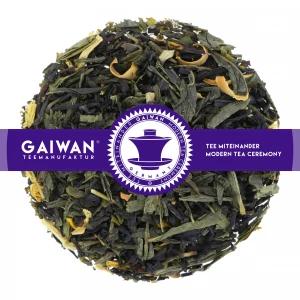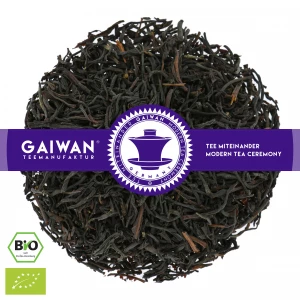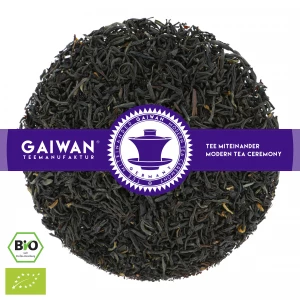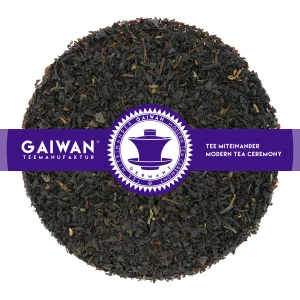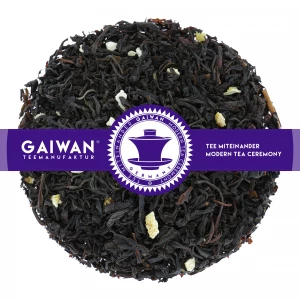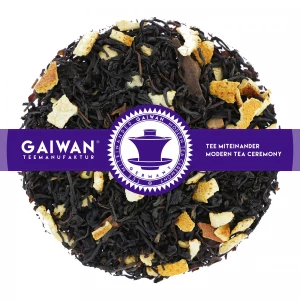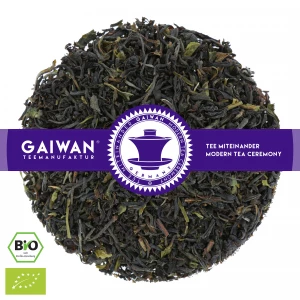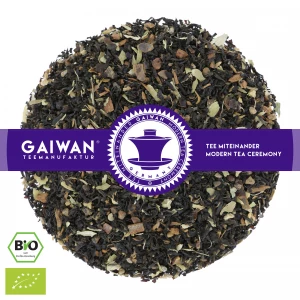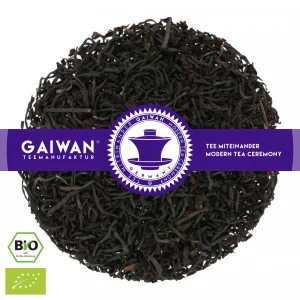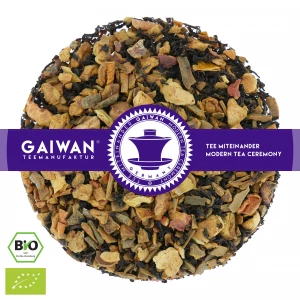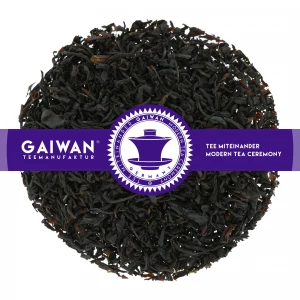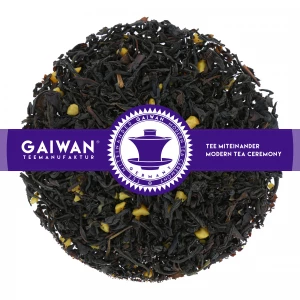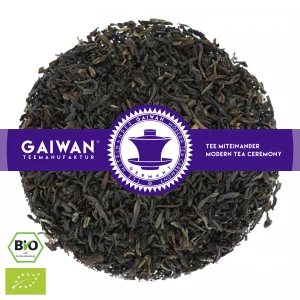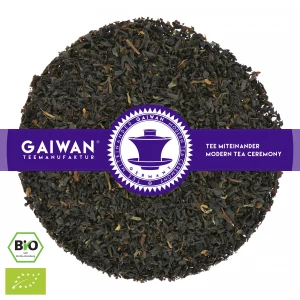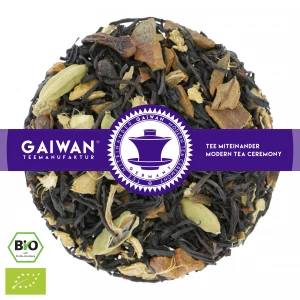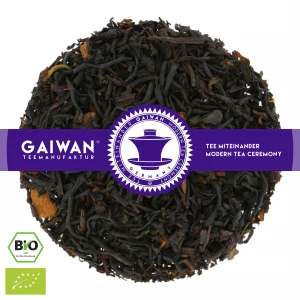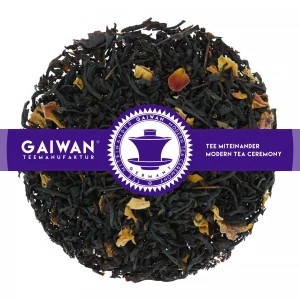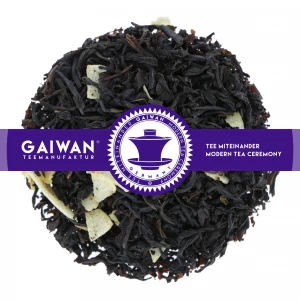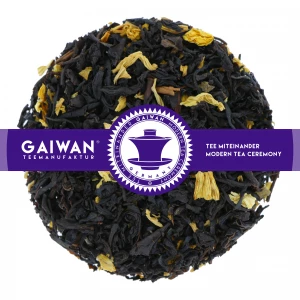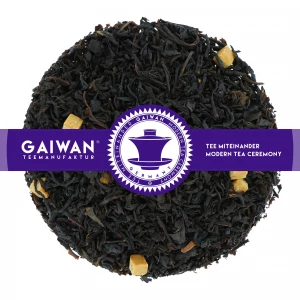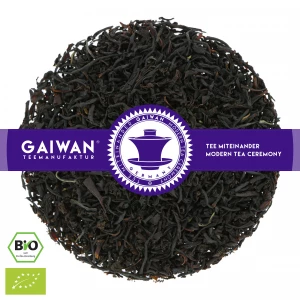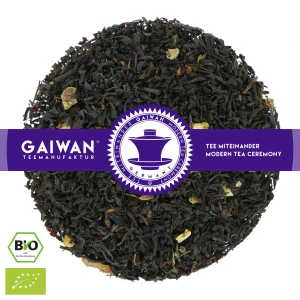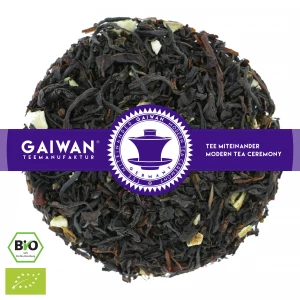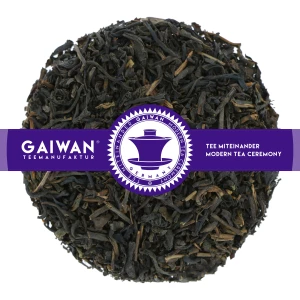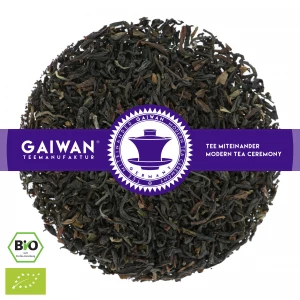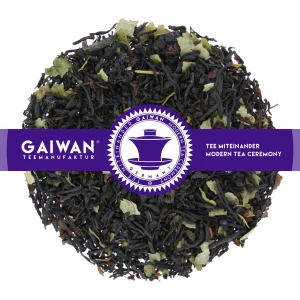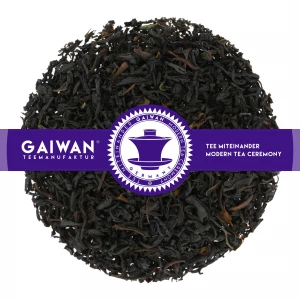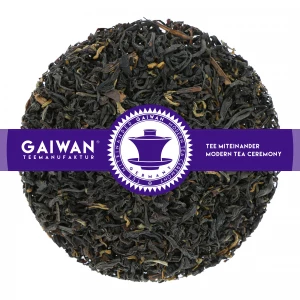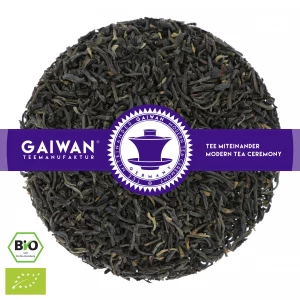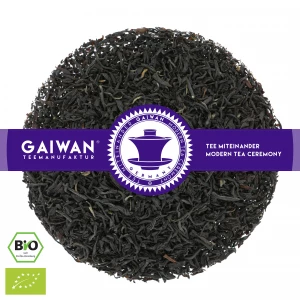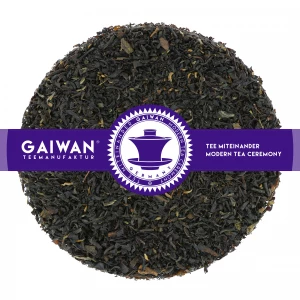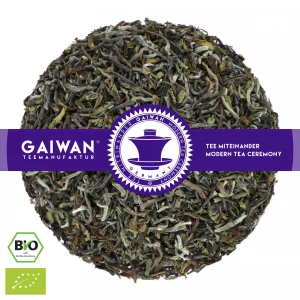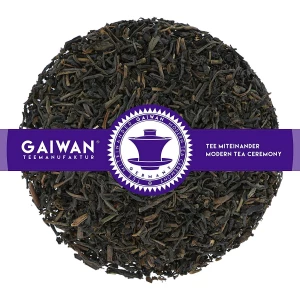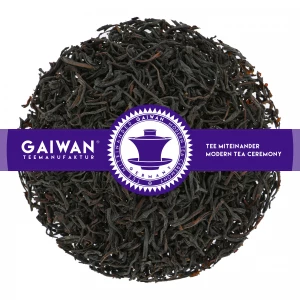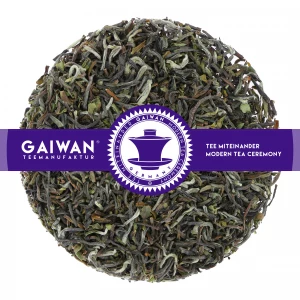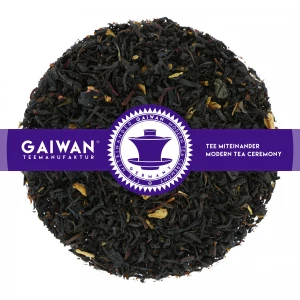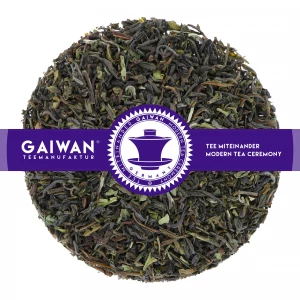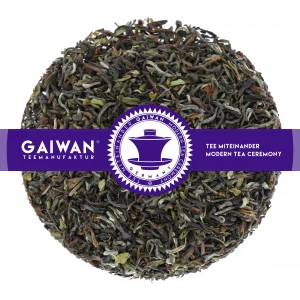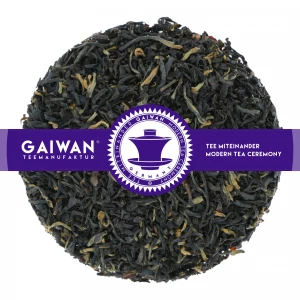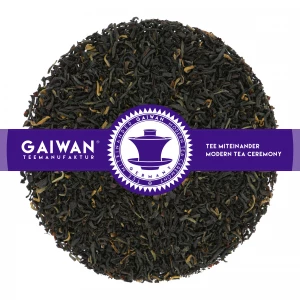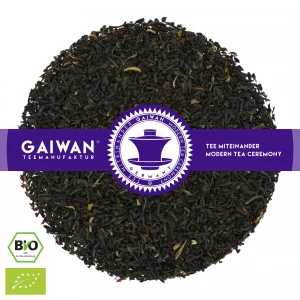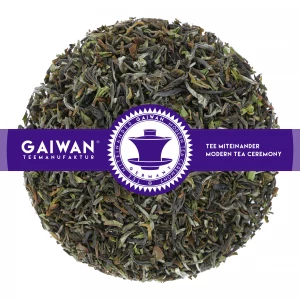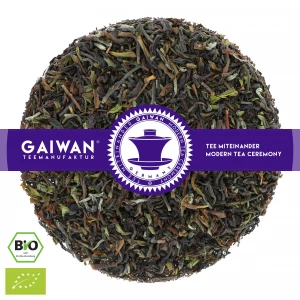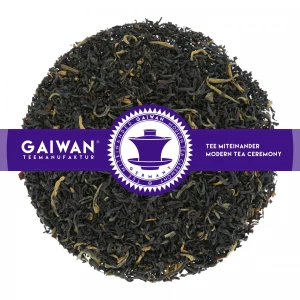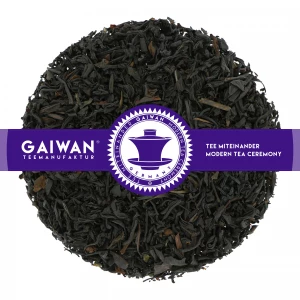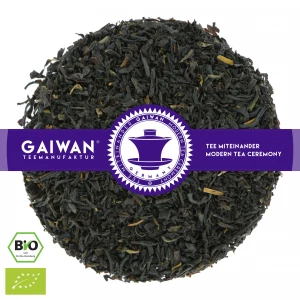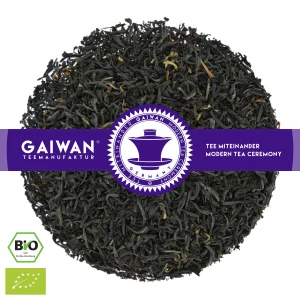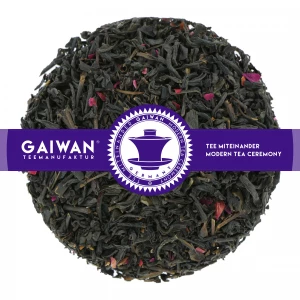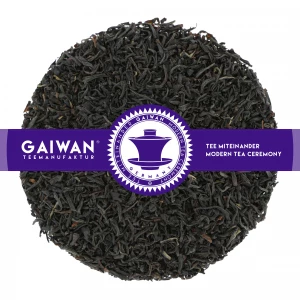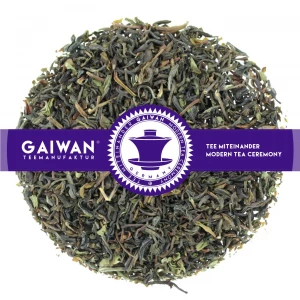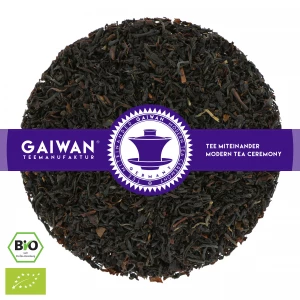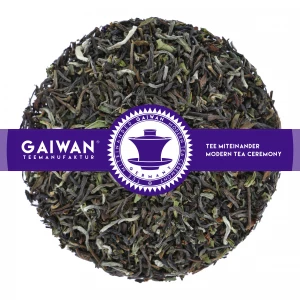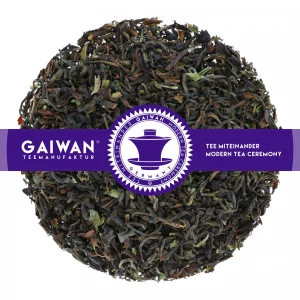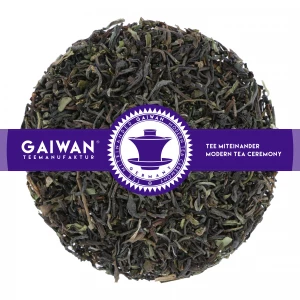All About Black Tea
Everyone knows black tea. There are countless varieties that can be enjoyed either pure or with all kinds of additional ingredients or flavourings. They all originate from the same plants from which green tea is also made. Unlike green tea, however, the leaves are fermented, which produces the characteristic colour and unique taste. In the article below, we would like to provide you with a whole range of useful information about black tea, its origin, preparation, mode of action and differences in taste. Why not read the article over a delicious cup of Darjeeling?
Continue reading:
-
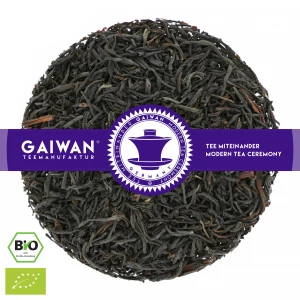
-
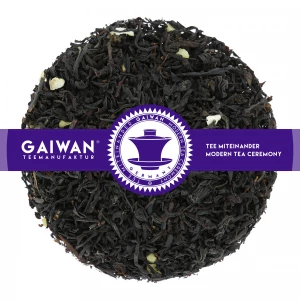
-
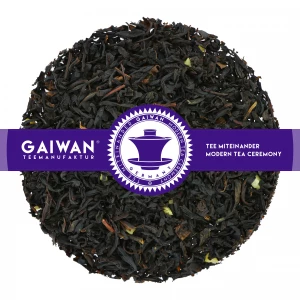
-

-
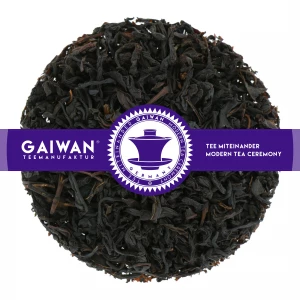
-
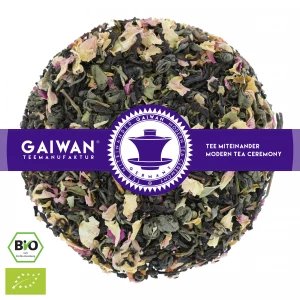
-
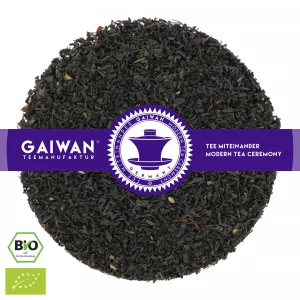
-
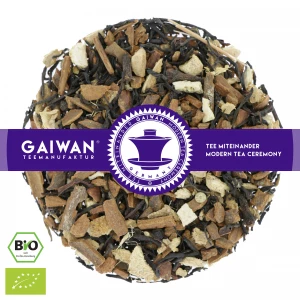
-

-

-

-

-

-

-

-

-

-

-

-

-

Organic loose leaf black tea "Darjeeling Seeyok SFTGFOP1" - GAIWAN® Tea No. 1189
€16.99Out of stock
-

-

-

-

-

-

-

-

-

-

-

-

-

-

-

-

-

-

-

-

-

-

-

-

-

-

-

-

-

-

-

-

-

-

-

-

-

-

-

-

-

-

-

-

-

-

-

-

-

-

-

-

-

-

-

-

-

-

-

What is Black Tea?
Black tea is made by fermenting the plucked tea leaves through a complex process. After picking, they are first dried in the sun until they wilt. This is followed by a mechanical process in which the leaves are pushed through two rollers. This breaks down the cell walls without completely destroying the leaves. This releases the essential oils and other plant substances, which then begin to react with the air. This is the fermentation process, although more precisely it is an oxidation, i.e. a reaction with oxygen. The same thing happens with a cut apple, for example: the acid and the other substances in the apple react with the oxygen and the fruit begins to turn dark.
The tea leaves also slowly turn darker and darker through this reaction. From copper red to deep brown to actually almost black are the different colours that can emerge for the tea in this process. The longer it is fermented, the darker the leaves become.
The dark red to brownish colour of the tea, as well as the copper-red colour of some fermented leaves, is incidentally one of the reasons why black tea is actually known as "red tea" in East Asia.
When the fermentation is to be completed, the tea is dried at over 80°C. This can be done in different ways. For example, so-called smoked teas come from China. These are dried over an open fire, which actually gives them a lovely smoky aroma. If you are open to a new and wonderful taste experience, we recommend our delicious Chinese smoked tea Lapsang Souchong.
Last but not least, the tea leaves are mechanically sorted by leaf grades using a sieving process. There are a large number of different leaf grades, from whole leaves, to broken or smaller leaves, to so-called fannings, which are millimetre-small pieces of leaf and are usually used for bag teas. This is not the only characteristic for the quality of the respective tea, but the condition of the leaves is definitely important. If you have ever read tea names like SFTGFOP1 or TGBOP with question marks over your head, we can help you with this article on leaf grades.
The History of Black Tea
Black tea has not been available in Europe for very long. For many centuries, Europe only had green tea, which was mainly imported from Holland in China. In the mid-nineteenth century, the British also began to enter the tea trade. They founded the British East India Company and tried to separate themselves from China by establishing tea plantations in Africa, India and Sri Lanka. They also had mainly black tea produced on these plantations, as this was much better received in Europe than the original green variety. It was not until the end of the nineteenth century that black tea also reached Germany.
In addition to Camellia Sinensis as the usual tea plant, in 1823 a special tea variety was found in the Indian state of Assam, the so-called Camellia Assamica. It has a much stronger flavour, is extremely productive (it can grow into whole trees, whereas Camellia Sinensis only grows between one and five metres tall) and thus quickly became the main ingredient in English and East Frisian tea blends.
Origin and Taste
Black tea has many different growing regions, of which a few large producers effectively cover the global trade single-handedly, while smaller growing regions usually distribute their tea in their own surrounding areas. Many regions produce black tea with their own distinctive taste. This has to do with both the tea plant used and the growing conditions. Both the growing soil used and the weather, as well as the regional altitude of the tea gardens play a role. Some teas are harvested in regions at an altitude of 2000 metres and are thus not only among the higher-altitude teas, but also among the higher-quality teas.
India
Even though the original tea plant originated in China, India is nowadays the world's most important country for international black tea production. Camellia Sinensis as well as Camellia Assamica and other hybrid varieties of the plants are cultivated there. There are several major regions that have their own distinctive black tea varieties.
Darjeeling, for example, is known for its light, somewhat pale black tea with a very distinctive aroma. The best teas are grown in the higher mountainous areas of the Himalayas at altitudes of up to 2000 metres. For many, Darjeeling teas are considered the crown of black teas. There are many subtle differences between the different varieties here, depending on the grade of leaf used, the altitude at which it was grown and the time of year the leaves were harvested. If you would like to taste one of our highest quality teas, we recommend this delicious Darjeeling from the famous Seeyok tea plantation.
Right next to Darjeeling is the state of Sikkim. There is only one cultivation area there. Our Sikkim is somewhat similar to Darjeeling in taste, but a little stronger.
The tea of the same name comes from the Indian state of Assam. This is made exclusively from the Assam tea plant. Since Assam grows quite eagerly, it is often not harvested by hand, but with machines. This in turn makes it cheaper and, thanks to its strong flavour, an always popular basis for dark black tea blends of all kinds. Here we recommend our ever-popular organic East Frisian Tea or our high-quality and spicy Assam Malty FTGFOP.
In the south of India are the Nilgiri mountains in Tamil Nadu. Nilgiri tea tastes a little like Ceylon tea. Nilgiri is also often added to Assam to create a tea base with a varied flavour, such as for our black tea Orange.
China
Tea has been grown in China for several thousand years. Although China mainly produces green tea, there are also some well-known and popular black teas from here. The Lapsang Souchong mentioned above, for example, comes from the largest tea-growing region in China: Fujian. This is where most of China's tea is produced.
There are other well-known regions in China, such as Yunnan. Yunnan is best known for its black tea and is the only place in the world that is allowed to produce Pu-Erh tea. Other tea gardens may also offer pressed tea, but only the pressed tea from Pu'er in Yunnan is also allowed to bear this name.
Sri Lanka
Many people are probably not even aware that they are drinking tea from Sri Lanka, unless they are well-versed in history. Sri Lanka was originally called Ceylon (pronounced Tsailon, by the way) and the tea is still sold under this name. Sri Lanka is also the world's fourth largest producer of tea. Ceylon tea is, with a few exceptions, always black tea with a medium strong and tart flavour, which can sometimes even contain citrus notes. Ceylon is often found with Assam in black tea blends, but it also tastes excellent on its own. As in the other countries, the higher plantations are known for higher quality tea. If you want to taste it for yourself, we recommend our certified organic Ceylon Highgrown FOP.
Turkey
Turkey is actually one of the largest tea producers as well as one of the largest tea consumers in the world. The word for tea in Turkish is cay (pronounced chai) and a visitor to Turkey will often notice it, as it is part of hospitality to offer tea. Turkish tea comes mainly from Rize, is black and is drunk pure and boiling hot from a small glass.
Earl Grey – A Noble Among Black Teas
Almost everyone knows it. The delicious citrus aroma of a freshly brewed Earl Grey fills the entire room before the impeccable and unique taste delights the palate. There are all kinds of legends about how this tea came about. They all share the fact that for some reason bergamot oil was poured over the tea. The most likely explanation is that this was done on purpose to protect the black tea from the smell of mould and fish on long ship voyages. After all, the tea was imported from China and was thus on the high seas for weeks. Earl Grey got its name in reference to Charles Grey, the 2nd Earl Grey, a British Prime Minister, who had abolished the East India Company's price monopoly in the tea trade with China in 1833. However, he had nothing to do with the invention of tea, because Grey's Tea existed even before the first officially documented mention of Earl Grey.
While genuine Earl Grey was originally produced only with black tea from China and bergamot oil, this has changed a little over the centuries. Nowadays, Earl Grey is also available with Ceylon, Assam or Darjeeling as a base, and not even exclusively as black tea. For example, we have a delicious Earl Grey Green and also Earl Grey Rooibos on offer. A particularly exquisite blend is our popular Earl Grey Blue Star, which also contains mallow blossom and orange peel.
We always use at least 90% pure bergamot oil for our blends, which we finely tune with mandarin and lemon. See for yourself and try our certified organic Earl Grey Classic.
Preparing Black Tea
Every tea needs to be prepared properly. With black tea, for example, it is always advisable to heat the water to 100°C and not let it cool down before pouring it over the tea. Since black tea is the most fermented, it needs the intense heat of the water to flush the ingredients out of the leaves. Afterwards, black tea can be brewed several times to discover different nuances of the tea each time. We recommend our large tea glass with strainer and lid for preparing our teas. This allows you to conveniently pour over the tea, remove and enjoy it, and then hang the same tea in the glass again. The first infusion should steep for 3-4 minutes. The following ones, always brewed with freshly boiling water, should steep a little longer each time.
Tea should generally be drunk with filtered water, as this ensures a pure and unadulterated taste. Otherwise, the lime in tap or commercial mineral water can combine with certain ingredients and thus unintentionally alter the taste. However, this is even more true for Assam tea. The black tea of the Camellia Assamica reacts quite violently to lime-containing water and leaves behind unsightly brown precipitates as a result.
Is Black Tea Healthy?
In general, we recommend that visitors to our site enjoy our tea primarily for its exquisite taste rather than for its potential healing properties. Nevertheless, it is undeniable that black tea has a few positive effects on the body.
As is widely known, black tea usually contains high amounts of caffeine and thus serves wonderfully as a morning pick-me-up or invigorating drink with lunch. Since black tea has a lot of tannins and the caffeine is attached to these tannins, the caffeine from tea also breaks down more slowly in the body than with coffee. Thus, the caffeine is gentler, slowly and steadily increasing concentration and avoiding a sudden drop, which is sometimes seen with coffee. The tannins are also known to lower blood pressure and cholesterol levels. They are also said to have an antibacterial and soothing effect on the stomach and intestines.
Equally, however, too much black tea consumption is not advised. For one thing, the high caffeine content can have a negative effect on the body if you drink too much of it. This can result in nervousness or sleep disorders. The tannins can also irritate the stomach instead of soothing it if consumed in excess. Even though black tea contains important vitamins and minerals, too much of a good thing can hinder the body's absorption of iron, which can lead to other unpleasant side effects. Last but not least, the tannins discolour the teeth if consumed in excess.
So black tea, like almost everything in life, is a healthy hot drink and a delicious stimulant when consumed in the right amounts. How much is "too much" depends, of course, from person to person and can certainly be increased by regular consumption. In any case, we at GAIWAN wish you good health and a few pleasant, relaxing moments with your favourite tea. Cheers.


